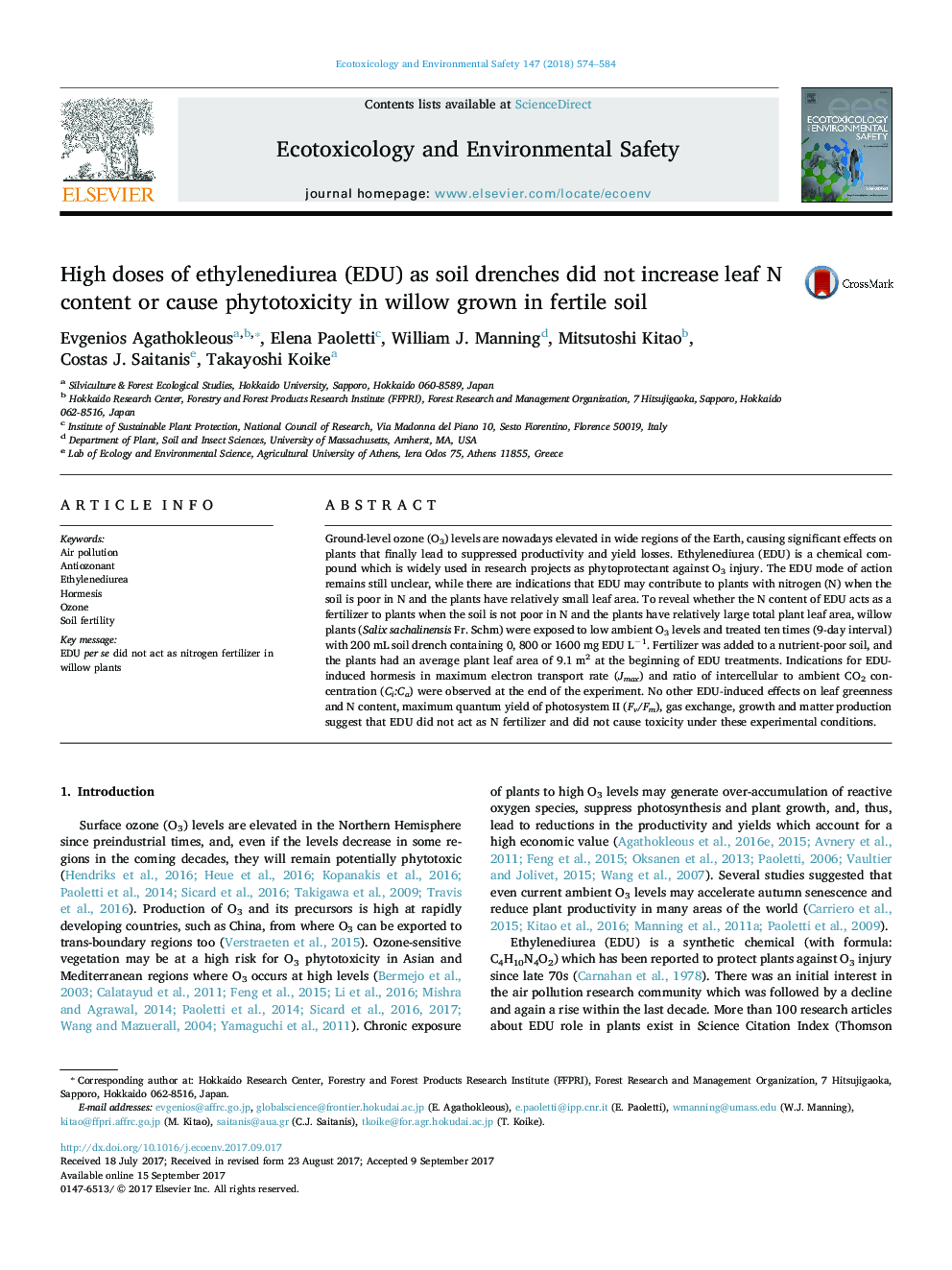| کد مقاله | کد نشریه | سال انتشار | مقاله انگلیسی | نسخه تمام متن |
|---|---|---|---|---|
| 5747822 | 1618917 | 2018 | 11 صفحه PDF | دانلود رایگان |

- There were signs for EDU-induced hormesis in physiological traits of a willow.
- EDU high doses did not contribute to willow plants with N.
- There were no obvious toxicity symptoms by such high EDU doses.
Ground-level ozone (O3) levels are nowadays elevated in wide regions of the Earth, causing significant effects on plants that finally lead to suppressed productivity and yield losses. Ethylenediurea (EDU) is a chemical compound which is widely used in research projects as phytoprotectant against O3 injury. The EDU mode of action remains still unclear, while there are indications that EDU may contribute to plants with nitrogen (N) when the soil is poor in N and the plants have relatively small leaf area. To reveal whether the N content of EDU acts as a fertilizer to plants when the soil is not poor in N and the plants have relatively large total plant leaf area, willow plants (Salix sachalinensis Fr. Schm) were exposed to low ambient O3 levels and treated ten times (9-day interval) with 200Â mL soil drench containing 0, 800 or 1600Â mg EDU Lâ1. Fertilizer was added to a nutrient-poor soil, and the plants had an average plant leaf area of 9.1Â m2 at the beginning of EDU treatments. Indications for EDU-induced hormesis in maximum electron transport rate (Jmax) and ratio of intercellular to ambient CO2 concentration (Ci:Ca) were observed at the end of the experiment. No other EDU-induced effects on leaf greenness and N content, maximum quantum yield of photosystem II (Fv/Fm), gas exchange, growth and matter production suggest that EDU did not act as N fertilizer and did not cause toxicity under these experimental conditions.
234
Journal: Ecotoxicology and Environmental Safety - Volume 147, January 2018, Pages 574-584